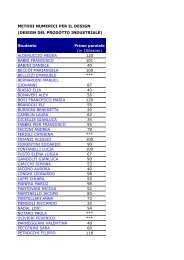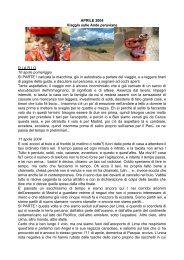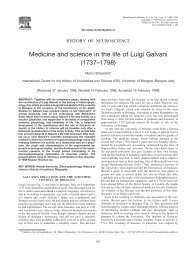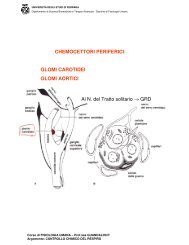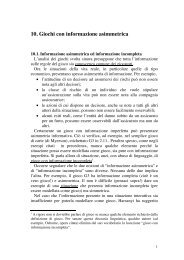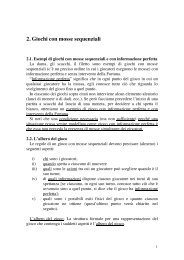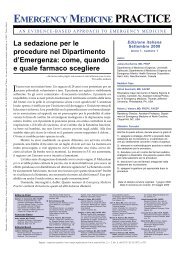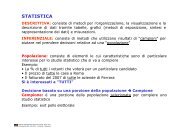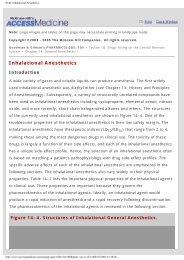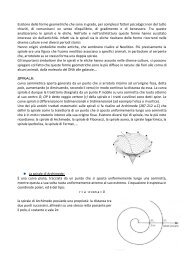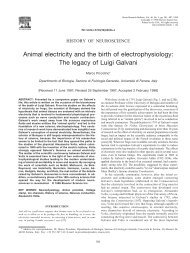Implicit-Explicit Runge-Kutta schemes for hyperbolic systems ... - utenti
Implicit-Explicit Runge-Kutta schemes for hyperbolic systems ... - utenti
Implicit-Explicit Runge-Kutta schemes for hyperbolic systems ... - utenti
You also want an ePaper? Increase the reach of your titles
YUMPU automatically turns print PDFs into web optimized ePapers that Google loves.
Space discretizations<br />
We consider the case of the single scalar equation<br />
ut + f(u)x = 1<br />
ε g(u).<br />
We have to distinguish between <strong>schemes</strong> based on cell averages (finite volume approach<br />
as in most <strong>schemes</strong>) and <strong>schemes</strong> based on point values (finite difference approach).<br />
Let ∆x and ∆t be the mesh widths. We introduce the grid points<br />
xj = j∆x, xj+1/2 = xj + 1<br />
∆x,<br />
2<br />
j = . . . , −2, −1, 0, 1, 2, . . .<br />
and use the standard notations<br />
Finite volumes<br />
u n j = u(xj, t n ), ū n j = 1<br />
∆x<br />
� xj+1/2<br />
xj−1/2<br />
u(x, t n ) dx.<br />
Integrating the equation on Ij = [x j−1/2, x j+1/2] and dividing by h we obtain<br />
�<br />
dū�<br />
�<br />
dt<br />
� j<br />
= − 1<br />
∆x [f(u(x j+1/2, t)) − f(u(x j−1/2, t)) + 1<br />
ε∆x g(u)|j<br />
As usual the key step is the reconstruction step necessary to reconstruct the function<br />
u(x, t) at the grid points (required to evaluate the right hand side) starting from its cell<br />
average u(x, ¯ t).<br />
26



